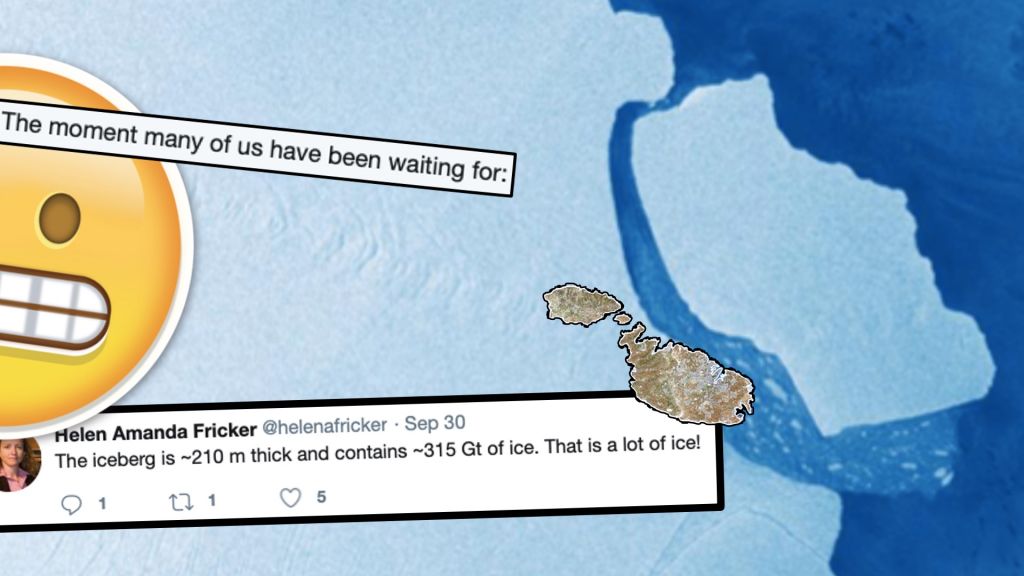‘A Baby Tooth Turned Into A Molar’: Enormous Iceberg Five Times The Size Of Malta Breaks Away From Antarctica

Imagine an iceberg as big as the entire country of Malta. Now, imagine an iceberg that’s five times that size. Well, an iceberg that large exists… and it’s just broken away from mainland Antarctica.
Dubbed D28, the iceberg, which is an eye-watering 1,583 square kilometres, broke away from the Amery Ice Shelf last week, leading to some impressive satellite imagery courtesy of the European Union Earth Observation Programme. And if you want some more context on the size, here’s another comparison; D28 is a tad bigger than London.
When it comes to comparison, though, international media houses like Euronews were quick to draw the comparison to Malta, bringing the scale of the massive iceberg into proper Mediterranean context by the first sentence.
If this all sounds impressive, it’s because it is; this is actually the biggest iceberg the Amery Ice Shelf has produced in over 50 years.
With a size that large, D28 is also expected to potentially pose a hazard to future shipping lanes… which means the tracking of the massive iceberg has in fact just begun.
Now updated with the correct date labels in the gif pic.twitter.com/KxMzpBW2BI
— Stef Lhermitte (@StefLhermitte) September 30, 2019
— Helen Amanda Fricker (@helenafricker) October 1, 2019
The good news is that, for once, this doesn’t seem to be either a cause for alarm or a side-effect of climate change.
And in this day and age, that’s very comforting news.
“With 1583 square kilometres, it is large enough to be named by NIC, but still small relative to some of the largest icebergs in history,” assistant professor at the Department of Geoscience and Remote Sensing Stef Lhermitte explained on Twitter.
In fact, this ‘calving event’ has been predicted for almost two decades, with many specialists in the field having affectionately called the area around D28 Amery Ice Shelf’s “Loose Tooth” for the last 20 odd years.
“The iceberg is around 210 metres thick and contains 315 gigatonnes of ice,” glaciologist Helen Amanda Fricker elaborated. In fact, it turns out D28 took more with it than initially planned. “The iceberg is not the Loose Tooth,” Fricker wrote on Monday. “It is a larger piece of ice to the west of LT. It is like expecting a baby tooth to come out, and instead out comes a molar.”
Eye-watering size aside, however, Fricker went on to clarify that “it’s important to remember that this calving event is part of a healthy ice shelf cycle”, and that this news is not connected to climate change.
Having said that, between late 2014 and 2017, the Antarctic sea ice extent saw a rapid loss of some two million square kilometres… nearly four times the area of Spain.